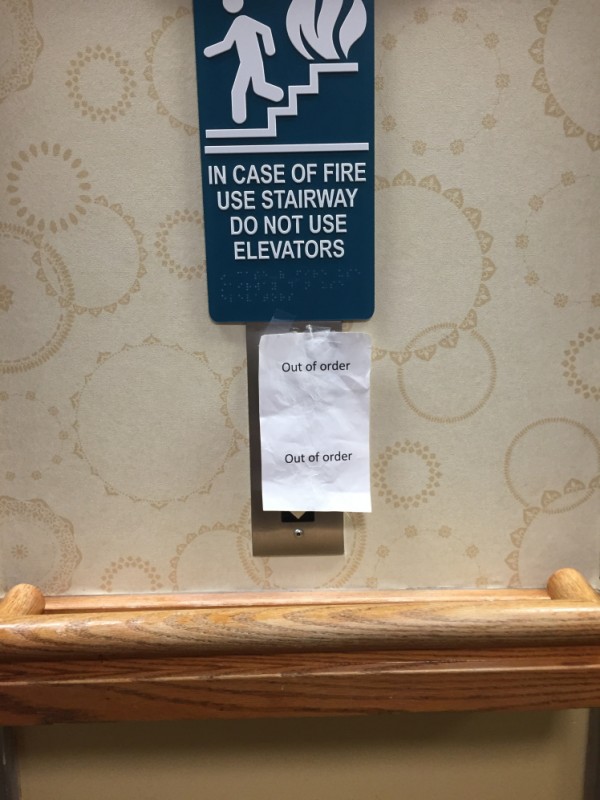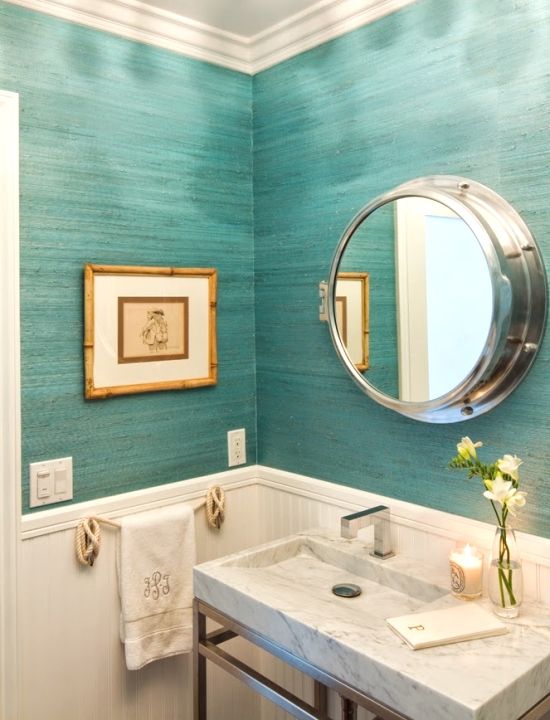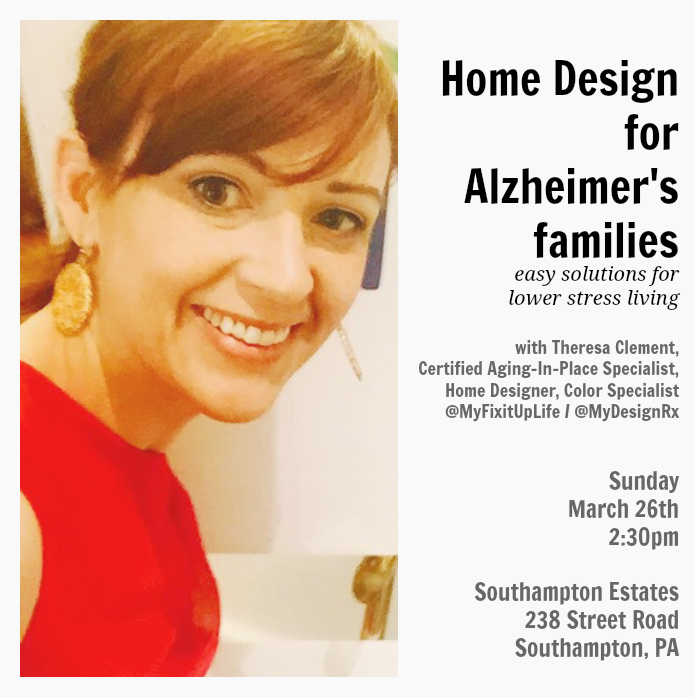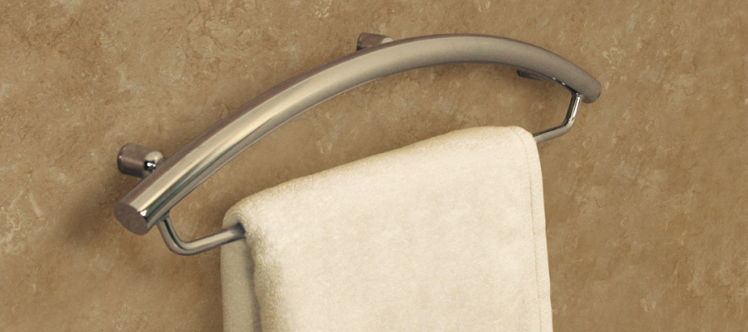
Wandering and getting lost is a huge safety issue for a loved one with Alzheimer’s. I have a few easy design ideas that can help.

The more you learn about how Alzheimer’s affects your loved one, the easier it is to create ways to minimize safety risks through design.
And you don’t need to earn a PhD in neurology to understand the basics of how Alzheimer’s affects memory, and affects how the brain processes sensory clues (sight, sound, taste).
So the further along in the disease, the more you’ll notice these changes. I’m just going to leap past first stage and dive into the later stages when the senses are no longer working as they do in a healthy brain. It’s always best to be prepared to manage what might come next as the Alzheimer’s disease progresses.
Here are a few things about Alzheimer’s to keep in mind.
- Black looks like the abyss. If you paint your entry door black or put a black door mat in front of a door, your loved one with Alzheimer’s will fear being near the door. If there are other doors or cabinets in your home where you want to discourage your loved one from entering, this works there, too.
- Looking up or down is no longer normal. It sounds odd, but if you add a lock above where the your loved one expects the lock to be located, and above her line of sight, she won’t see it. She’ll assume the lock she unlocked is broken. This helps you keep the door locked when you want it locked, and it helps to reduce the possibility of wandering.
- Color overrules function. Another design strategy is to paint or wallpaper the door the same as the wall. Cover the trim, the door, and the entire area around the wall that same color. The door will visually disappear for someone with Alzheimer’s.
- Sound can be your friend. Personally I’m charmed by the sleigh bells at a shop, and it’s an inexpensive way to announce that someone is entering or leaving your home. And you can also get a traveler’s lock, which let out a sound when the door knob is turned.
If you have an Alzheimer’s design strategy to eliminate wandering, we’d love to know about it. Please share in the comments below, or send me a note.















